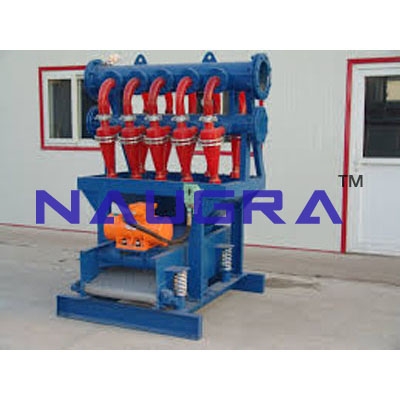- Civil Lab Mechanical Lab Engineering Lab Equipments
- sales@didacticlabequipments.com

CAT NO: DIDACTICNLE-Export-210039
Hydrocyclone- Engineering Lab Training Systems.
Technical Description
Hydrocyclones can be used to separate
solids suspended in liquids. In the suspension is prepared in a tank. A
stirrer prevents premature settling of the solid particles. An
eccentric screw pump delivers the suspension into the tangential inlet
of the cyclone. In the cyclone a downward primary vortex is created. The
downward taper causes the vortex to reverse. In the middle it moves as a
secondary vortex back up towards the immersion tube, where the
suspension emerges from the cyclone, having lost the coarse material in
it. Inside the cyclone an air core is formed. The centrifugal forces
cause the coarser solid particles in the primary vortex to be enriched.
They are discharged with the bottom flow at the apex nozzle. It is
mainly the fine material that is discharged from the top.
The outflow
form of the bottom flow changes depending on the solid concentration of
the introduced suspension. Where the solid concentration is high,
strand discharge occurs. Where the solid concentration is low, the
discharge is fan-shaped.
The flow rate in the inlet is adjusted by
way of the pump speed and measured with a magneto-inductive flow meter.
Sampling points are installed at the bottom and top flow points. The
flow rates in them can be determined by means of a measuring cup and a
stopwatch. To determine the solid concentration, a balance and a drying
chamber are recommended. Using a suitable analysis device (such as a
diffraction spectrometer), a separation function can be produced and the
separation size determined. Quartz powder is recommended for use as the
solid.
